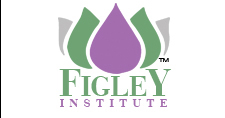|
To become a Certified Field Traumotolgist an individual must complete:
Equivalency Certification
The Academy of Traumatology's Commission on Certification and Accreditation will approve Certified Traumatologist certification status to qualified applicants who have completed a course of study that includes educational and experiential content that results in the applicant being able to demonstrate:
Traumatology Treatment Approaches
1. Knowledge of the continuum of post-traumatic stress responses and disorders from the perspective of trauma theory; including dissociative and DESNOS phenomena;
2. Awareness of the major symptoms of acute and chronic post-traumatic stress disorders, including possible implications for personality development;
3. Awareness of and be able to discuss how symptoms of post-traumatic stress disorders may be misdiagnosed;
4. Knowledge of at least five (5) instruments used to assess disorders associated with traumatic stress and discuss the potential merits and deficits of each
5. Knowledge of the utility of phase-oriented treatment with trauma survivors;
6. Knowledge of and competence in implementing the Herman Tri-phasic treatment approach;
7. Competence in helping clients to establish inter- and intrapersonal safety including self-soothing and symptom containment skills;
8. Effectiveness in comparing and contrasting six (6) treatments of PTSD;
9. Knowledge in discussing how the therapist may effectively employ the "self" as a tool for healing.
Back to top
Relational Applications and Systemic Traumatology
1. Knowledge of effective screening, intake, assessment and treatment skills with traumatized populations: individuals (children), families, and groups that vary by the characteristics of the clients.
2. Knowledge of family systems relative to traumatic stress and be able to provide systemic interventions with the entire traumatized family;
3. Skill in individual critical incident debriefing/interventions with a focus upon the prevention of traumatic stress and related disorders;
4. Knowledge of variations in response to traumatic stress among various cultural, racial, gender, and age groups and communities;
5. Skill in recognizing effective efforts at trauma stabilization and resolution that change to meet the unique requirements of communities;
6. Knowledge of the theory, purpose, and characteristics of the Green Cross-approved treatments connected to various contexts;
7. Knowledgeable about competent case management with traumatized populations including recording, report-writing, ancillary services and referral as it varies by context;
8. Knowledge about context flexible treatments, assessments, and techniques that work across contexts;
9. Knowledge of the Academy of Traumatology's Standards of Practice that includes the ethical standards for traumatology and the respect for differences.
Competence in One of the Brief Treatment for the Traumatized.
Back to top
Competence in One of the Brief Treatment for the Traumatized
1. Knowledge of the theory of the treatment approach;
2. Awareness of the underlying principles of the treatment approach reported to lead to the resolution of posttraumatic stress reactions;
3. Knowledge of the emergence of the treatment approach from its inception through various protocols to its present form;
4. Awareness of how the treatment approach is especially appropriate for clients who seek relief from PTSD symptoms;
5. Knowledge and competence in applying the treatment protocol to the Tri-Phasic Model of treatment for clients who seek relief from PTSD symptoms;
6. Knowledge and competence in applying the treatment protocol to affect trauma stabilization and resolution interventions that best fit the unique requirements for clients who seek relief from PTSD symptoms;
7. Knowledge and competence in applying the treatment protocol to resolve the effects of their trauma memories and posttraumatic symptoms for clients who seek relief from PTSD symptoms;
8. Knowledge and competence in applying the treatment protocol to assist trauma clients in developing more satisfying lifestyles.
Back to top
The Practice of Clinical Traumatology
1. Competence in effective screening, intake and assessment skills with traumatized individuals, families and groups;
2. Competence in writing a comprehensive, measurable and reality-based treatment plans attending to both trauma stabilization and resolution in cooperation with a client;
3. Competence in designing and implementing a trauma stabilization and resolution intervention with a focus upon developing mastery in a chosen brief treatment, theory-driven protocol;
4. Competence in utilizing the Herman Tri-Phasic Model for developing and maintaining an effective treatment trajectories with traumatized clients;
5. Competence in case management with traumatized clients including recording, report-writing, ancillary services and referral;
6. Competence in discussing and integrating the Academy of Traumatology's Standards of Practice for Traumatologists (including but not limited to the ethical standards);
7. Competence in developing and implementing clinical outcome measurements for working with clients to assess efficacy;
8. And maintain a non-anxious presence with clients;
9. Awareness and the practice of a clinical presence that is both intentional and less reactive with clients struggling with trauma material;
10. Completion of at least 20 hours of supervision of clinical practice with traumatized clients by a Certified Traumatologist;
11. Knowledge of countertransference and compassion fatigue in clinical practice;
12. Competence in facing and discussion the person's own issues with countertransference and compassion fatigue in clinical practice with traumatized individuals;
13. Competence in developing strategies for treating, managing, and preventing one's own secondary traumatization and compassion fatigue;
14. Competence in developing action plans to address biases, blind spots and deficiencies as a practitioner in the course of the supervision process.
15. Documentation of 20 hours of supervised practicum (10 hours of which may be done in a group setting) or equivalency (letter from a Certified Traumatologist or other licensed supervisor stating these hours have been completed).
16. Documentation of 100 hours of face-to-face contact with traumatized people (individual or group therapy).
Back to top
Field Traumatologist Certification
Field Traumatologist certification is a pre-requisite for Certified Traumatologist.
1. Knowledge about the causes of trauma and the trauma response;
2. Knowledge about posttraumatic stress symptoms, their causes, and their purpose in healing;
3. Knowledge about the principles of emergency mental health;
4. Competence in conducting an initial trauma assessment;
5. Knowledge of the Four Waves of Intervention;
6. Competence in utilizing the six steps of the Individual Defusing Model (Assessment, Triage, and Stabilization & Referral);
7. Skill in applying psychological debriefing of various groups following a traumatic event;
8. Skill in applying psychological debriefing of various individuals following a traumatic event;
9. Knowledge about the rationale, use, and procedures for a program in crisis intervention and stress management;
10. Knowledge of the definition and related symptoms of work-related burnout and Compassion Fatigue and describe related symptoms;
11. Knowledge of and competence in applying work-related burnout and compassion fatigue prevention and self-care strategies
12. Completion of the United States Federal Emergency Management Agency's web-based course* IS-195 ( Incident Command System)
13. Completion of the United States Federal Emergency Management Agency's web-based course IS-7 (Citizen's Guide to Disaster Assistance)
14. Knowledge of and adherence to the Academy of Traumatology Standards of Traumatology Practice that is located at http://www.traumatologyacademy.org/SOC.html
Back to top
|







